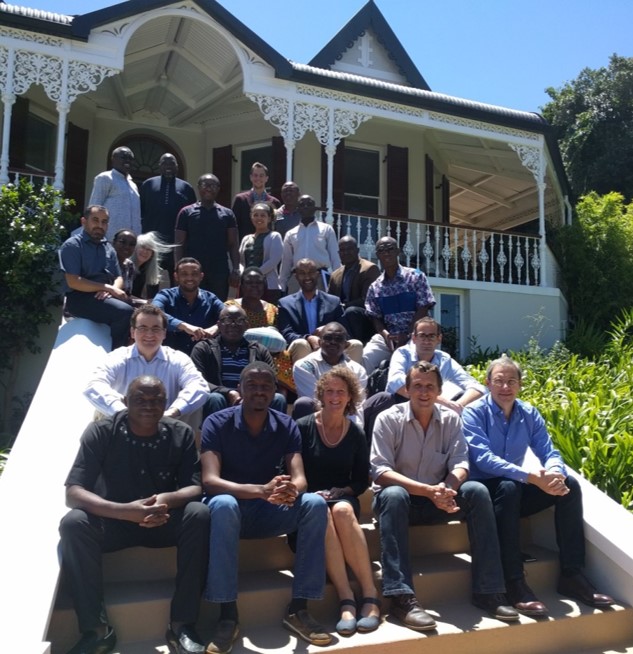6.2.1: 1. Introduction
- Page ID
- 18292
International guidelines for thyroid nodules and cancers require availability of TSH, ultrasound, FNAC, thyroid scans, RAI, thyroid and calcium monitoring and replace-ment, and reliable follow-up. However, frequently not all these interventions are available, and follow-up may be unreliable. The AfHNS Clinical Practice Guidelines for Thyroid Cancer in Developing Countries and Limited Resource Settings tailor management of thyroid masses and cancers according to diagnostic and therapeutic resources available to physicians and their patients.
Background
Thyroid nodules are very common (approx. 50% of population), more prevalent in women (reference), >90% are benign (reference), and >90% of thyroid cancers are differentiated i.e. papillary (PTC), follicular (FTC), or Hürthle cell thyroid cancers (HTC). Because differentiated cancers are generally slow-growing and have a good prognosis (reference), treatment of differentiated thyroid cancer has become more conservative with observation being a reasonable option for small (<1.5 cm) papillary thyroid cancers (references), with less extensive surgery and less frequent use of radioactive iodine employed for low risk differentiated cancers (references).
Many thyroid nodules and cancers are diagnosed incidentally by ultrasound (U/S) and other imaging modalities. However, radiological screening for thyroid nodules and cancers is not recommended (reference).
Because the majority of thyroid nodules are not life threatening and hence do not require surgery, investigation of a thyroid nodule is directed at identifying the minori-ty of cases that require thyroid surgery, as opposed to observation or simple reassu-rance. The principal diagnostic tools used for thyroid nodules and cancers and to avoid unnecessary surgery are thyroid U/S and fine needle aspiration cytology (FNAC).
International guidelines for management of thyroid nodules and cancers such as those of the American Thyroid Association (ATA) and National Comprehensive Cancer Care (NCCN) assume the availability of TSH, U/S, FNAC, thyroid scans, radioactive iodine (RAI), thyroid and calcium monitoring and replacement, and reliable follow-up. However, in low resource settings in developing countries, such investigations, thera-peutic interventions, and even thyroid and calcium monitoring and replacement, are frequently not available or unaffordable, and follow-up may be unreliable. Hence international guidelines for management of thyroid nodules and cancers cannot always be applied in developing countries.
Without resource appropriate guidelines for thyroid nodules and cancers, resident surgeons and volunteer surgeons from developed countries have little to guide them about best practice when working in such resource limited settings. This might lead to inappropriate surgery, over-investigation or, in the worst case scenario, even fatal consequences either directly from surgical complications or from hypocalcaemia or hypothyroidism when patients do not have access to calcium and thyroid hormone monitoring, replacement or reliable follow up.
Methodology of developing AfHNS guidelines
The AfHNS convened a task force (video) to enumerate thyroid surgery guidelines for low resource settings. This collaboration between physicians from African and Developed countries included members of the AfHNS, American Head & Neck Society; American Academy of Otolaryngology Head and Neck Surgery; and French Otolaryngology Society.

The 2018 National Comprehensive Cancer Network (NCCN) algorithms for thyroid nodules and cancers were referenced and adapted for limited resources using the ADAPTE process. Due to paucity of literature about management of thyroid nodules and cancers in low resource settings, much of the recommendations represents expert opinion.
Following a meeting of the task team in Cape Town in December 2018, the guidelines were circulated for comment to all the task team members before being published.
Johan Fagan & Mark Zafereo (Co-Chairs)


